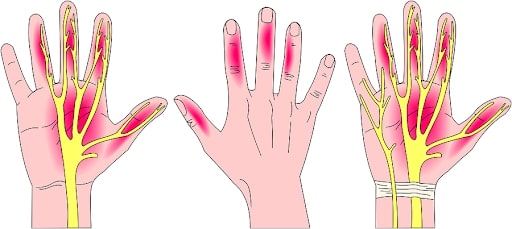


In Europe, in 1998, over 60% of upper limb musculoskeletal disorders recognised as work-related were CTS cases cases. In all western countries, an increase is reported in the number of work-related musculoskeletal disorders (WMSDs) caused by strain and repeated movements (biomechanical overload). The prevalence of CTS in the United Kingdome (UK) alone is 7-16% ) much higher than the 5% prevalence in the United States (US). More common in females than in males, its occurrence is commonly bilaterally with a peak age range of 40 to 60 years although it occurs in all age groups. Incidence rates of up to 276:100,000 per year have been reported, with a prevalence rate up to 9.2% in women and 6% in men. 1 in every 5 subjects who complains of symptoms such as pain, numbness and a tingling sensation in the hands is expected to have CTS based on clinical examination and electrophysiological testing, idiopathic CTS being the most common diagnosis in patients with these symptoms. ĬTS is the most frequent entrapment neuropathy, believed to be present in 3.8% of the general population. Anterior interosseous nerve syndrome is characterised by complete or partial loss of motor function of the muscles innervated by the anterior interosseous nerve (AIN), a motor branch of the median nerve in the forearm. Pronator syndrome is defined as compression of the median nerve in the forearm that results in sensory alteration in the median nerve distribution of the hand and the palmar cutaneous distribution of the thenar eminence. Other forms of median nerve entrapment neuropathies include pronator syndrome and anterior interosseous nerve syndrome. Physiological evidence indicates increased pressure within the carpal tunnel, and therefore decreased function of the median nerve at that level. CTS is a neuropathy caused by entrapment of the median nerve at the level of the carpal tunnel, delimitated by the carpal bones and by the transverse carpal ligament. An entrapment neuropathy is a chronic focal compressive neuropathy caused by a pressure increase inside non-flexible anatomical structures. ĬTS is the most well-known and frequent form of median nerve entrapment, and accounts for 90% of all entrapment neuropathies. The American Academy of Orthopaedic Surgeons (AAOS) Clinical Guidelines on the Diagnosis of CTS defines it as a symptomatic compression neuropathy of the median nerve at the level of the wrist. It is a compressive neuropathy, which is defined as a mononeuropathy or radiculopathy caused by mechanical distortion produced by a compressive force. First described by Paget in 1854, Carpal Tunnel Syndrome (CTS) remains a puzzling and disabling condition commonly presented to Rheumatologists and Orthopaedic Hand clinicians.


 0 kommentar(er)
0 kommentar(er)
